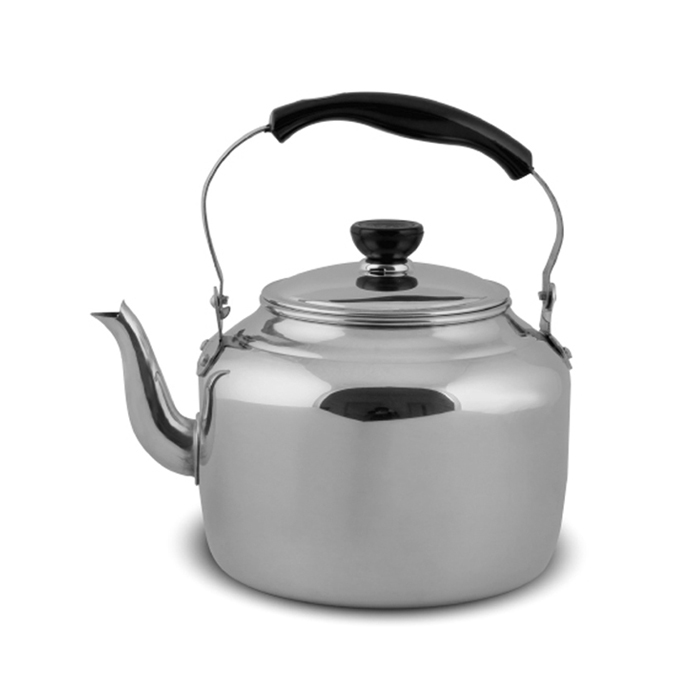Aluminum vs Stainless Steel: Which Kettle Handle is Better?

When choosing a kettle, you might wonder which handle material is better: aluminum or stainless steel. Each offers unique benefits. Consider factors like durability, heat conduction, safety, and cost-effectiveness. Aluminum kettle handles excel in heat conduction, making them efficient for quick heating. However, stainless steel boasts superior durability with a tensile strength of 70,000 to 100,000 psi, compared to aluminum’s 20,000 to 30,000 psi. Your choice depends on what you value more—speed or longevity. Understanding these differences helps you make an informed decision.
Material Properties
Aluminum Kettle Handle
When you consider an aluminum kettle handle, you notice its lightweight nature. This makes it easy to lift and pour, especially when the kettle is full. Aluminum’s excellent thermal conductivity allows heat to spread quickly and evenly. This property ensures that the handle remains cool enough to touch, reducing the risk of burns. However, aluminum is softer than stainless steel, which means it can dent or scratch more easily. Despite this, many manufacturers use anodized aluminum to enhance its durability and resistance to corrosion. Anodizing creates a protective layer on the surface, making the handle more robust and long-lasting.
Stainless Steel Kettle Handle
In contrast, a stainless steel kettle handle offers superior strength and durability. Stainless steel’s tensile strength ranges from 70,000 to 100,000 psi, significantly higher than aluminum’s 20,000 to 30,000 psi. This strength makes stainless steel handles less prone to bending or breaking under pressure. Additionally, stainless steel resists corrosion better than aluminum, thanks to its chromium content. This resistance ensures that your kettle handle maintains its appearance and functionality over time. While stainless steel is heavier, its durability and sleek appearance often make it a preferred choice for those seeking longevity and style in their kitchenware.
Heat Conduction
Aluminum Kettle Handle
When you choose an aluminum kettle handle, you benefit from its excellent heat conduction. Aluminum conducts heat much more efficiently than stainless steel. This property allows the kettle to heat up quickly, saving you time when boiling water. The rapid heat distribution ensures that the handle remains cooler to the touch, reducing the risk of burns. This feature makes aluminum a popular choice for those who prioritize speed and efficiency in their kitchen tasks. However, remember that while aluminum excels in heat conduction, it may not retain heat as long as stainless steel.
Stainless Steel Kettle Handle
In contrast, a stainless steel kettle handle offers different thermal properties. Stainless steel has one of the lowest thermal conductivities among metal alloys. This means it does not conduct heat as quickly as aluminum. While this might seem like a disadvantage, it actually provides a benefit. The slower heat conduction ensures that the handle stays cooler for longer periods, enhancing safety when handling the kettle. Additionally, stainless steel retains heat better, which can be advantageous if you need to keep the water warm for extended periods. This characteristic makes stainless steel a preferred choice for those who value safety and heat retention over rapid heating.
Durability
Aluminum Kettle Handle
When considering the durability of an aluminum kettle handle, you find that it offers a balance between strength and weight. Aluminum is inherently lightweight, which makes it easy to handle and reduces strain during use. However, its softer nature compared to stainless steel means it can be more susceptible to dents and scratches. Manufacturers often enhance aluminum’s durability by anodizing it, creating a protective layer that increases resistance to wear and corrosion. This process not only extends the lifespan of the handle but also maintains its appearance over time. Despite these enhancements, aluminum handles may still require more care to avoid damage from rough handling or impacts.
Stainless Steel Kettle Handle
In contrast, a stainless steel kettle handle provides exceptional durability. Stainless steel’s high tensile strength ensures that it withstands significant pressure without bending or breaking. This robustness makes it an ideal choice for those who prioritize longevity in their kitchenware. Additionally, stainless steel’s resistance to corrosion further enhances its durability, allowing it to maintain its structural integrity and aesthetic appeal over time. The material’s recyclability also contributes to its long-term value, as it supports sustainability and energy savings. While stainless steel handles are heavier, their durability and resistance to wear make them a reliable option for everyday use.
Safety
Aluminum Kettle Handle
When you consider safety, aluminum kettle handles offer several advantages. Aluminum’s excellent heat conduction ensures that the handle remains cool to the touch, minimizing the risk of burns. This feature is particularly beneficial when you need to pour hot water quickly. However, aluminum’s softer nature means it can deform under excessive pressure, potentially compromising safety if not handled with care. Anodized aluminum handles provide an added layer of protection, enhancing their resistance to wear and tear. This process not only strengthens the handle but also reduces the likelihood of sharp edges forming from scratches or dents. Always ensure that the Kettle Spare Parts is securely attached to the kettle to prevent accidents.
Stainless Steel Kettle Handle
Stainless steel kettle handles prioritize safety through their robust construction. The material’s high tensile strength ensures that the handle remains intact even under significant stress. This durability reduces the risk of the handle breaking or bending during use. Stainless steel’s lower thermal conductivity compared to aluminum means the handle stays cooler for longer, further enhancing safety when handling hot liquids. Additionally, stainless steel’s resistance to corrosion ensures that the handle maintains its structural integrity over time, preventing potential hazards from weakened materials. For optimal safety, regularly check the handle’s attachment to the kettle and ensure it remains secure.
Cost-Effectiveness
Aluminum Kettle Handle
When you consider the cost-effectiveness of an aluminum kettle handle, you find it to be a budget-friendly option. Aluminum Tea kettles are generally more affordable than their stainless steel counterparts. This affordability stems from the widespread availability and use of aluminum in cookware production. You can often find aluminum kettles at a fraction of the price of stainless steel ones, making them an attractive choice if you’re looking to save money. Additionally, aluminum’s excellent heat conduction means your kettle will heat up quickly, which can save energy and reduce utility costs over time. However, keep in mind that while aluminum is less expensive, it may require more frequent replacement due to its susceptibility to dents and scratches.
Stainless Steel Kettle Handle
In contrast, a stainless steel kettle handle represents a more significant initial investment. Stainless steel kettles tend to cost more due to the material’s strength and durability. Despite the higher upfront cost, you might find that a stainless steel kettle offers better long-term value. Its robust construction means it is less prone to damage, reducing the need for frequent replacements. Additionally, stainless steel’s resistance to corrosion ensures that your kettle maintains its appearance and functionality over time. If you prioritize longevity and are willing to invest more initially, a stainless steel kettle handle could prove to be a cost-effective choice in the long run.
Ningbo Xianghai Kitchenware is professional in this area of producing Aluminum Kettle handles and kettle sapre parts. The factory has advanced equipment, efficient assembly line production system, experienced workers, as well as diversified product types and broad sales market. We are committed to providing customers with quality products and satisfactory service, and constantly strive for excellence.
In your quest to find the ideal kettle handle, consider the key factors: durability, heat conduction, safety, and cost-effectiveness. Aluminum handles offer excellent heat conduction and affordability, making them a practical choice for quick heating needs. However, stainless steel handles provide superior durability and safety, with their robust construction and resistance to corrosion.
“Match your material selection with the needs of your project.”
Ultimately, your choice should align with your personal preferences and kitchen requirements. Whether you prioritize speed or longevity, selecting the right material ensures your kettle serves you well.
Post time: Dec-18-2024

